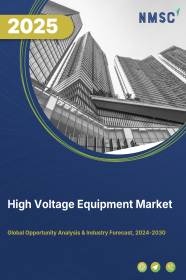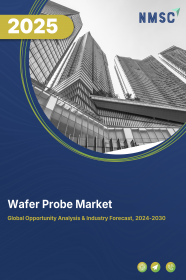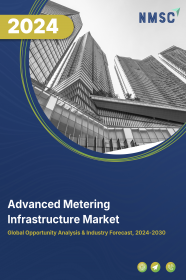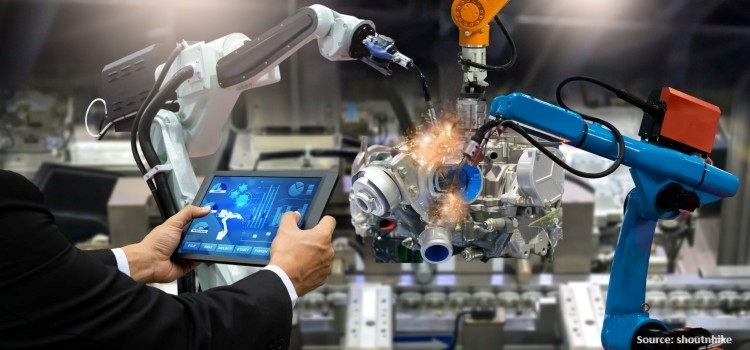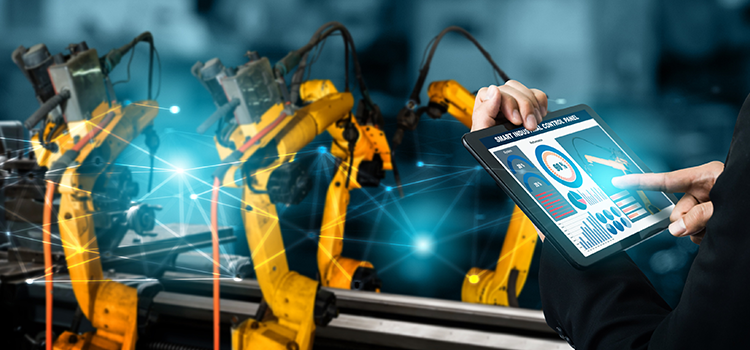
Denmark Industrial Process Automation Market by Component (Manufacturing Execution System (MES), Distributed Control System (DCS), Programmable Logic Control (PLC), Supervisory Control & Data Acquisition (SCADA), Field Instruments, Industrial Robots, and Process Analyzers and Drives), and by End-User (Oil & Gas, Chemical & Refining, Energy & Power, Pulp & Paper, Metals & Mining, Pharmaceutical, Cement & Glass, and Others) – Opportunity Analysis and Industry Forecast, 2024–2030
Industry: Semiconductor & Electronics | Publish Date: 05-Dec-2024 | No of Pages: 123 | No. of Tables: 89 | No. of Figures: 54 | Format: PDF | Report Code : SE1027
Denmark Industrial Process Automation Market Overview
The Denmark Industrial Process Automation Market size was valued at USD 365.6 million in 2023, and is predicted to reach USD 446.4 million by 2030, at a CAGR of 2.3% from 2024 to 2030. The industrial process automation sector refers to the industry that provides technologies and systems designed to monitor, control, and optimize industrial operations.
It involves the integration of advanced computer technology, hardware, and software solutions to automate key processes such as inventory management, manufacturing, production, and quality control. The key technologies include sensors, programmable logic controllers (PLCs), human-machine interfaces (HMIs), and supervisory control and data acquisition (SCADA) systems.
This market serves industries such as oil and gas, chemical processing, food and beverage, and pharmaceuticals, where automation is crucial for improving operational efficiency, product quality, and workplace safety. By reducing costs and minimizing human error, automated control systems enable companies to streamline their production processes, ensuring higher output with greater precision.
The demand for industrial process automation solutions continues to grow as businesses seek to enhance productivity and remain competitive in an increasingly automated global manufacturing environment.
Government Support for Automation Boosts the Market Growth in Denmark
Denmark's government has been instrumental in fostering the growth of industrial process automation market across various industries. By offering financial incentives, funding for research and development, and promoting the adoption of innovative technologies, the government is focused on making Danish industries more competitive on the global stage.
In April 2022, the government implemented AI-powered tools to improve the detection of harmful consumer products, significantly enhancing regulatory efficiency. These initiatives have led to more effective compliance monitoring, with up to five times better detection rates.
The government’s role in facilitating such advancements through the Danish Safety Technology Authority's automation initiatives sets a benchmark for other sectors, positioning Denmark as a leader in technology-driven industrial growth. These efforts reflect the strategic focus on enhancing efficiency and sustainability, both of that are central to the country's innovation agenda.
Rising Labor Cost Drives the Growth of the Market
The shortage of labor across Denmark’s key industries has been a major driver for automation. High labor costs, due to the lack of available workforce, are pushing companies to find more cost-effective solutions to maintain productivity. This labor challenge has led many companies to adopt automation technologies to streamline their operations and reduce reliance on human labor.
A notable example is the rise of autonomous mobile robots (AMRs) in industrial settings. Companies such as mobile industrial robots (MiR) are leading the charge with innovative products designed to handle heavy lifting and material handling tasks in challenging industrial environments.
Lack of Standardization Hinders the Growth of Industrial Process Automation Market
The lack of standardization is a major challenge that can limit the Denmark industrial process automation market growth. Without common standards, vendors may develop proprietary systems that are hard to replace or upgrade. This can result in vendor lock-in, where companies become dependent on a specific vendor’s technology, restricting their ability to switch to other vendors.
Vendor lock-in often leads to increased costs, reduced flexibility, and less innovation, that negatively affect the Denmark industrial process automation market expansion. Companies might hesitate to invest in automation systems if they are worried about being tied to one vendor’s technology, further slowing the industry growth.
Industry 4.0 Technologies Paving the Way for Future Automation Opportunities
The progress in industry 4.0 technologies, including the internet of things (IoT), cloud computing, and artificial intelligence (AI), is generating considerable opportunities for the Denmark industrial process automation market trends.
These advancements enable companies to gather and analyze vast amounts of data in real time, offering critical insights into their operations and identifying areas for improvement. As technology continues to advance, industry participants are partnering with tech-focused firms to create new solutions based on established technologies.
Competitive Landscape
Several players operating in the Denmark industrial process automation industry include Siemens AG, Honeywell International, Schneider Electric, Mitsubishi Electric, Rockwell Automation, Emerson Electric Co., ABB Ltd., Omron Corp., Fanuc Corp., Toshiba Corp., and others.
Denmark Industrial Process Automation Market Key Segments
By Component
-
Manufacturing Execution Systems
-
Hardware
-
Software
-
Services
-
-
Distributed Control Systems
-
Hardware
-
Software
-
Services
-
-
Programmable Logic Control
-
Hardware
-
Software
-
Services
-
-
Supervisory Control and Data Acquisition (SCADA)
-
Hardware
-
Software
-
Services
-
-
Field Instruments
-
Industrial Robots
-
Process Analyzers & Drives
By End-User
-
Oil & Gas
-
Chemical & Refining
-
Energy & Power
-
Pulp & Paper
-
Metals & Mining
-
Pharmaceutical
-
Cement & Glass
-
Others
Key Players
-
Siemens AG
-
Honeywell International
-
Schneider Electric
-
Mitsubishi Electric
-
Rockwell Automation
-
Emerson Electric Co.
-
ABB Ltd.
-
Omron Corp.
-
Fanuc Corp.
-
Toshiba Corp.
REPORT SCOPE AND SEGMENTATION:
|
Parameters |
Details |
|
Market Size in 2023 |
USD 365.6 Million |
|
Revenue Forecast in 2030 |
USD 446.4 Million |
|
Growth Rate |
CAGR of 2.3% from 2024 to 2030 |
|
Analysis Period |
2023–2030 |
|
Base Year Considered |
2023 |
|
Forecast Period |
2024–2030 |
|
Market Size Estimation |
Million (USD) |
|
Growth Factors |
|
|
Companies Profiled |
10 |
|
Market Share |
Available for 10 companies |
|
Customization Scope |
Free customization (equivalent up to 80 working hours of analysts) after purchase. Addition or alteration to country, regional, and segment scope. |
|
Pricing and Purchase Options |
Avail customized purchase options to meet your exact research needs. |

















 Speak to Our Analyst
Speak to Our Analyst



